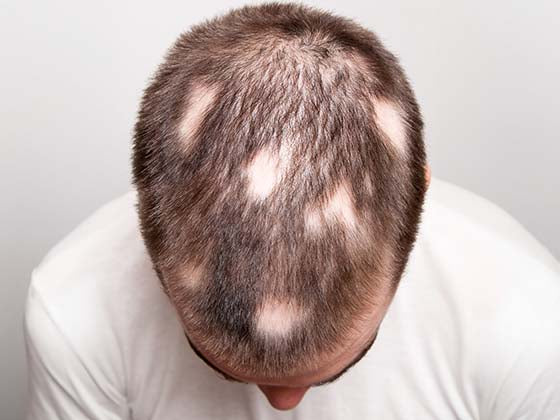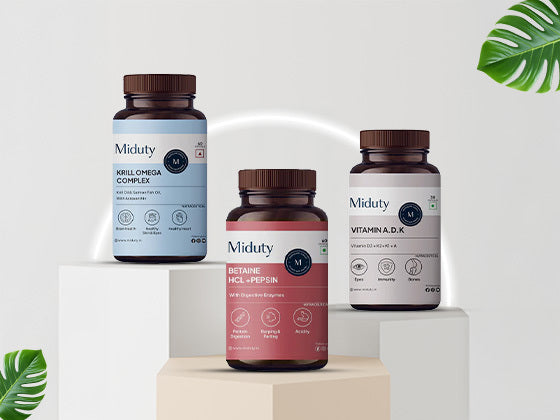- Understanding Ice Pick Scars
- Treating Ice Pick Scars
- DIY & OTC Scar Care
- Products Recommendation
- FAQs
Ice pick scars, characterised by their narrow and deep depressions, can be a persistent aesthetic concern following severe acne. This comprehensive guide delves into the underlying causes of ice pick scar formation. Empowered with this knowledge, we will then explore the development of personalised treatment plans to minimise their visibility and achieve a smoother, more even complexion. By navigating the scientific basis behind ice pick scars and outlining targeted strategies, this guide equips you with the tools necessary to achieve optimal skin health and regain confidence.
Unveiling Ice Pick Acne Scars: Origins and Impacts

Ice pick scars, are indeed, a stubborn remnant of acne's wrath. Ice pick acne scars are more than just blemishes. They can be a source of self-consciousness and a constant reminder of past breakouts. Let's delve deeper into their origins and the impact they have.
1. Origins:
-
Inflammation Depth: Regular pimples typically cause shallow inflammation limited to the upper skin layer (epidermis). However, ice pick scars arise from severe acne like cysts and papules. These inflammations penetrate deep into the dermis, the second layer of skin rich in collagen and elastin - the building blocks of healthy, plump skin.
-
Collagen Breakdown: During severe acne breakouts, the intense inflammation damages these collagen and elastin fibers. The body attempts to repair the damage, but sometimes this process goes astray.
-
Scarring vs Healing: Ideally, the body lays down new collagen to fill the space where the pimple resided, resulting in smooth, healthy skin. In cases of ice pick scars, however, collagen production is either insufficient or the collagen produced is of a different type, leading to scar tissue formation instead.
-
Scar Formation: This scar tissue lacks the elasticity and structure of healthy skin, resulting in the characteristic deep, narrow pit of an ice pick scar. The deeper the inflammation goes, the deeper and more severe the resulting ice pick scar.
2. Impacts:
-
Shadowing and Texture: Ice pick scars are deeper than other acne scars, casting shadows on the skin's surface. This creates a pitted, uneven texture that can be especially noticeable in areas with thinner skin like the cheeks, temples, and forehead. Makeup application can also become more challenging due to the uneven surface.
-
Psychological Impact: Beyond physical appearance, ice pick scars can significantly impact a person's self-esteem and mental well-being. They can be a constant reminder of past acne struggles, leading to feelings of insecurity, anxiety, and even depression. Social interactions might be affected due to self-consciousness about the scars.
-
Individual Variations: The impact of ice pick scars varies greatly from person to person. Some individuals may find them barely noticeable and have minimal emotional concerns. However, for others, they can be a significant source of distress.
-
Age and Perception: It's important to note that perception of these scars can change over time. As people mature, they may become less self-conscious about their appearance. Additionally, societal beauty standards are constantly evolving, and acceptance of diverse skin textures is increasing.
Understanding these origins and impacts can help you navigate dealing with ice pick scars. Remember, while they can be a challenge, there are treatment options available, and self-acceptance plays a crucial role in overcoming their psychological impact.
The Anatomy of Ice Pick Acne Scars: A Closer Examination

Those deep, narrow indentations left behind by severe acne, referees to as Ice pick scars, are more than just surface imperfections. To understand them fully, let's take a closer look at their structure beneath the skin's surface.
-
Skin is a complex organ composed of multiple layers. The outermost layer is the epidermis, which provides a waterproof barrier and houses pigment-producing cells. Beneath it lies the dermis, a thicker layer containing connective tissue, blood vessels, hair follicles, and sebaceous glands (oil glands).
-
Unlike regular pimples that reside primarily in the epidermis, ice pick scars originate from deep within the dermis. Severe acne forms like cysts and papules trigger intense inflammation that burrows deep into this vital layer.
-
The dermis is rich in collagen and elastin fibres, which provide structure and elasticity to the skin. During an acne breakout, the inflammatory response damages these crucial fibres.
-
Ideally, the body would mend the damage caused by the pimple by generating new, healthy collagen fibres. This would fill the gap left behind by the healed pimple, resulting in smooth, barely noticeable scarring.
-
However, sometimes the healing process goes awry. Collagen production might be insufficient, or the body might produce a different type of collagen in response to the injury. This abnormal collagen forms scar tissue, a dense, inflexible material that lacks the structure of healthy skin.
-
This scar tissue fills the void left by the healed pimple, but unlike healthy skin, it has a different texture and depth. The lack of elasticity causes the scar to appear pitted and deep, resembling a narrow ice pick hole punched into the skin.
Unique Characteristics of Ice Pick Scars
Certain unique characteristics of Ice Pick Scars are:
-
Compared to other acne scars like rolling or box scars, ice pick scars delve deeper into the dermis. This depth is what creates the characteristic narrow pit and shadowing effect on the skin's surface.
-
The damage caused by the inflammation determines the specific shape of the ice pick scar. It can be V-shaped, U-shaped, or have a more irregular form.
-
The area around the ice pick scar might also be affected. The inflammation can damage surrounding collagen fibres, leading to a slight depression or uneven texture in the immediate vicinity of the scar.
Understanding this anatomical perspective of ice pick scars can help you appreciate the challenges they pose for treatment. The deep location and abnormal collagen structure make them more difficult to address compared to shallow acne scars. However, with advancements in dermatological techniques, there is hope for improvement.
Triggers and Preventive Measures: Sidestepping the Formation of Ice Pick Scars

While completely preventing ice pick scars can be challenging, understanding the triggers and implementing preventive measures can significantly reduce your risk. Here's a deep dive into both:
1. Triggers of Ice Pick Scars:
-
Severe Acne: As discussed earlier, ice pick scars are a consequence of severe acne forms like cysts and papules. These inflammations penetrate deep into the dermis, causing significant tissue damage that can lead to scar formation.
-
Hormonal Fluctuations: Hormonal imbalances, particularly during puberty, pregnancy, and menstruation, can trigger acne breakouts. These fluctuations can worsen existing acne and increase the risk of severe lesions that might lead to scarring.
-
Genetics: Unfortunately, genetics play a role in acne susceptibility. If you have a family history of severe acne, you might be more prone to developing deep inflammatory lesions and potentially ice pick scars.
-
Picking and Squeezing: It's tempting to tackle pimples head-on, but resist the urge! Picking and squeezing can worsen inflammation, damage surrounding tissue, and significantly increase the risk of scarring, including ice pick scars.
-
Improper Skincare: A harsh skincare routine can irritate the skin and exacerbate acne breakouts. Using oil-based or comedogenic (pore-clogging) products can trap bacteria and contribute to the formation of deep, inflammatory lesions.
2. Preventive Measures:
-
Early Intervention: Seeking professional help for acne early on is crucial for preventing acne scars. A dermatologist can assess your specific situation and recommend an effective treatment plan to manage acne and minimize the risk of future scarring. Consult the best dermatologists at Clinikally for availing the best dermatological solutions for scars!!
-
Gentle Skincare Routine: Develop a gentle, non-abrasive skincare routine tailored to your specific needs. Opt for oil-free, non-comedogenic cleansers like Sebamed Clear Face Cleansing Foam and moisturisers like Re'equil Oil Free Moisturiser. Avoid harsh scrubs and irritating products that can damage the skin.
-
Avoid Squeezing Pimples: The most important preventive measure is to resist the urge to pick or squeeze pimples. This can worsen inflammation and increase the risk of scarring.
-
Diet and Lifestyle: While diet isn't a direct cause of acne, certain foods can exacerbate breakouts. Consider consulting a dermatologist and a nutritionist to explore dietary modifications that might help manage your acne. Additionally, getting enough sleep and managing stress can also contribute to overall skin health.
-
Sun Protection: Sun exposure can worsen acne and make existing scars more noticeable. Regularly wear sunscreen with SPF 30 or higher to protect your skin from harmful UV rays. Clinikally SunProtect Sunscreen SPF 50/PA+++ is a great choice as it offers Infrared, Blue Light and UVA & UVB Protection. It is non-comedogenic and enriched with vitamin E and green tea extract, making it an excellent choice for oily and sensitive skin.
The Psychological Echo: Understanding the Emotional Toll of Acne Scars

Ice pick scars leave more than just physical marks. They can cast a long "psychological echo," that negatively impacts self-esteem, confidence, and social interactions. This emotional toll can be significant, leading to feelings of insecurity, anxiety, and even depression. Understanding this psychological impact of acne scars is crucial for those dealing with ice pick scars and emphasises the importance of addressing both the physical scars and the emotional impact they leave behind.
The Battle Against Ice Pick Scars: Effective Treatment Strategies

Ice pick scars can be a source of frustration. While completely eliminating them might not always be possible, there are effective treatment strategies to significantly improve their appearance. Here's a breakdown of some of the most common approaches:
A. Minimally Invasive Procedures:
1. Microneedling: This technique involves using a roller with fine needles to create tiny punctures in the skin. In Microneedling for acne scars, controlled injuries trigger the body's natural healing response, thereby stimulating collagen production. This can help fill in shallow ice pick scars and improve overall skin texture. Consult a dermatologist to know more!!
2. Chemical Peels: Controlled application of chemical solutions like glycolic or salicylic acid helps remove the outer layers of skin. This can be effective for shallow ice pick scars, promoting smoother texture and minimizing their depth. Book your slot now with the dermatologist as chemical peels for skin texture can be your magic shot at treating acne scars.
3. Laser Resurfacing: Different types of lasers can be used to target the deeper layers of skin. It also works on the principle of creating an injury that stimulates collagen production. Laser therapy for acne scars treatment can prove to be a miracle cure!!
B. Surgical Procedures:
1. Punch Excision: For deeper ice pick scars, dermatologists might recommend punch excision. This minimally invasive surgery involves removing the scar tissue with a small circular tool. The resulting wound is then stitched closed or allowed to heal naturally.
2. Punch Grafting: In cases of severe scarring, punch grafting might be an option. Here, the dermatologist removes the scar tissue and replaces it with a small skin graft taken from another area of the body, typically behind the ear. This offers a more permanent solution for deeper ice pick scars.
C. Combination Therapy:
Often, the best approach involves combining different techniques. For example, microneedling might be used in conjunction with laser resurfacing or fillers for a more comprehensive improvement.
D. Important Considerations While Choosing The Treatment:
-
Severity of Scars: The choice of treatment depends on the severity and depth of the ice pick scars. Shallower scars might respond well to microneedling or chemical peels, while deeper ones might require punch excision or grafting.
-
Individual Needs: A dermatologist will assess your specific situation, skin type, and desired outcome to recommend the most suitable treatment plan.
-
Recovery Time: Each treatment has its own recovery time, ranging from a few days for microneedling to several weeks for surgical procedures.
-
Realistic Expectations: Remember, even with effective treatments, completely eliminating ice pick scars might not always be possible. However, significant improvement in their appearance and a smoother skin texture are achievable goals.
The battle against ice pick scars requires a multiple-aspect approach. Consulting a qualified dermatologist for personalised treatment can significantly improve their appearance and boost your confidence. Remember, with the right strategy and a little patience, you can win this battle and achieve smoother, healthier-looking skin.
Advanced Dermatological Treatments: From Lasers to Peels

Ice pick scars, those deep, narrow indentations left behind by severe acne, pose a unique challenge for dermatologists. While traditional acne treatments might not be enough, advanced techniques offer significant improvement. Let's delve into some of the most effective options:
1. Laser Resurfacing:
-
Fractional Lasers: These lasers deliver concentrated beams of light that create microscopic columns of injury in the deeper layers of the skin. The body responds by producing new collagen, which fills in the scar and improves its texture. Fractional lasers are a versatile option, effective for a range of scar depths and offering minimal downtime.
-
Ablative Lasers: These powerful lasers remove a thin layer of skin, vaporising the scar tissue in the process. Ablative lasers offer more dramatic results for deeper ice pick scars, but they also come with a longer recovery time and require more careful post-treatment care.
2. Chemical Peels:
-
TCA Cross Technique: This targeted approach uses trichloroacetic acid (TCA) applied directly to the scar with a fine needle or toothpick. The TCA creates a controlled injury, stimulating collagen production and minimising the scar's depth. This technique is particularly effective for isolated, shallow ice pick scars.
-
Deep Peels: For deeper scars, stronger chemical peels like phenol peels might be considered. These peels remove a significant portion of the outer layers of skin, potentially leading to a noticeable reduction in scar visibility. However, deep peels come with significant downtime and potential side effects, requiring careful evaluation by a dermatologist.
3. Radiofrequency Microneedling:
This innovative technique combines microneedling with radiofrequency energy. Tiny needles puncture the skin, creating controlled injuries, while radiofrequency waves deliver heat to the deeper layers. This combination stimulates collagen production and improves skin texture, making it a valuable tool for addressing ice pick scars. It is also a variation of collagen induction therapy.
4. Other Advanced Options:
-
Subcision: It involves inserting a needle under the scar tissue to break fibrous adhesions that pull the skin down. This can elevate deeper scars and improve their appearance.
-
Dermal Fillers: Hyaluronic acid fillers can be injected beneath the scar to raise its level and create a smoother surface. This is a good option for isolated, shallow ice pick scars, but repeated touch-up sessions might be needed over time.
Choosing the Right Treatment
The optimal approach depends on several factors, including:
-
Severity of Scars: Deeper scars usually require more aggressive treatments like ablative lasers or subcision.
-
Skin Type: Laser treatments might not be suitable for all skin tones due to potential risks of hyperpigmentation.
-
Desired Outcome: Discuss your expectations with your dermatologist to determine the best course of action.
Advanced Acne Scar Treatments are powerful tools, but they often work best in conjunction with a good skincare routine. Maintaining a regimen of gentle cleansers, moisturisers, and sunscreen helps promote overall skin health and optimises results.
Homefront Tactics: DIY Remedies and Over-the-Counter Allies

Ice pick scars, deep and narrow depressions in the skin, can be challenging to treat. However, both DIY remedies and over-the-counter solutions offer potential for improvement. Home treatments and home remedies for scarred skin like aloe vera, honey, lemon juice, and baking soda can help heal and lighten scars. Meanwhile, over-the-counter products such as retinoids, silicone gel sheets, chemical peels, and microneedling rollers provide more targeted approaches to reduce the appearance of these scars and improve skin texture. Combining these methods may enhance skin healing and diminish the visibility of ice pick scars.
1. DIY Remedies for Ice Pick Scars:
-
Aloe Vera: Apply fresh aloe vera gel to the scars to help heal and moisturize the skin.
-
Honey: Use raw honey as a natural moisturizer and healing agent.
-
Lemon Juice: Apply lemon juice to lighten scars due to its natural bleaching properties (use with caution on sensitive skin) as Vitamin C for acne scars has proven to be one of the best preventive skincare practices.
-
Baking Soda: Exfoliate the skin gently with a baking soda paste to remove dead skin cells.
2. Over-the-Counter Treatments:
-
Retinoids: Products containing retinoids help increase cell turnover and reduce scar depth. Dermaceutic Activ Retinol 1.0 and Skinmedis Retinext Revitalising Serum can be incorporated into the skin care routine for scarred skin as they both are very potent and effective.
-
Silicone Gel Sheets: Promote healing and reduce scar appearance.
-
Chemical Peels: Use mild chemical peels containing glycolic acid or salicylic acid to exfoliate and smooth the skin. iS Clinical Active Peel System, Verso Enzyme Peel With AHA & PHA, and Bioderma Sebium Night Peel are highly recommended by the dermatologists. Don’t forget to patch test before using!
-
Microneedling Rollers: Stimulate collagen production and improve skin texture.
For severe scars, consult a dermatologist for professional treatments like laser therapy or fillers.
The Role of Diet and Lifestyle in Healing Acne Scars

Diet and lifestyle play crucial roles in the healing process of acne scars. A balanced diet rich in vitamins, minerals, and antioxidants can significantly improve skin health and facilitate scar healing. Foods high in vitamin C, E, and zinc support collagen production and skin repair. Staying hydrated helps maintain skin elasticity and moisture. In addition to Dietary influences on acne scars, lifestyle modification also plays a key role. Regular exercise boosts circulation, delivering essential nutrients to the skin. Adequate sleep and stress management are also vital, as they influence hormone levels and overall skin health. Incorporating these healthy habits can enhance the skin’s natural healing process and reduce the appearance of acne scars.
Integrating Scar Care into Your Skincare Regimen

While there's no magic bullet for erasing ice pick scars, a well-rounded skincare routine can definitely be a strong ally in your journey. Start by incorporating gentle cleansers like COSRX Salicylic Acid Daily Gentle Cleanser that remove dirt and oil without stripping your skin's natural moisture barrier. Follow up with a lightweight, fragrance-free moisturizer like Dermalogica Active Moist Moisturiser to keep your skin hydrated and plump. Sun protection is absolutely essential, as UV rays can darken scars and hinder healing. Look for a broad-spectrum SPF 30 or higher sunscreen for acne-prone skin and apply it daily, even on cloudy days. IPCA Acne-UV Gel Sunscreen SPF 30/PA+++ and Nourrir Tinted Sunscreen SPF 50 PA+++ are great choices. Remember, for more noticeable improvement, professional treatments like injectable fillers or laser resurfacing may be recommended. Consulting a dermatologist is key – they can assess your unique situation and create a personalized plan to minimize the appearance of your scars and achieve a smoother, more even complexion.
The Right Skincare Products: What to Look For

While completely eliminating ice pick scars might not be achievable with just over-the-counter products, incorporating the right ingredients into your routine can definitely help minimize their appearance and promote overall skin health. Here's what to look for:
-
Gentle Cleansers: Opt for fragrance-free, pH-balanced formulas that effectively remove dirt and oil without disrupting your skin's barrier. Sebamed Clear Face Cleansing Foam is one such product.
-
Hydrating Moisturizers: Since ice pick scars create dips in the skin's surface, keeping the surrounding area plump and hydrated can help make them appear less noticeable. Look for moisturizers with hyaluronic acid, ceramides, or glycerin, which help lock in moisture. Clinikally HydraSoothe Moisturiser is a great recommendation that ticks all the boxes.
-
Exfoliation (with Caution): Gentle exfoliation can help promote cell turnover and improve overall skin texture. However, be very cautious with ice pick scars. Avoid harsh scrubs and opt for chemical exfoliants with AHAs (like glycolic acid or lactic acid) at lower concentrations (around 5-10%). Cleale Acne Control Foaming Face Wash is a great option. Always patch-test on a small area of your face before applying it all over.
-
Sunscreen (Non-Negotiable): Sun exposure can worsen the appearance of scars by stimulating melanin production, which can cause darkening. Apply a broad-spectrum SPF 30 or higher sunscreen every single day, such as Faher-Chroma Tinted SPF 50+ Sunscreen PA++++, even on cloudy days, to protect your skin and prevent further scarring.
Few specific ingredients can play a vital role in healing the scar:
-
Retinoids: Retinols (Vitamin A derivatives) can stimulate collagen production, which helps improve skin texture and potentially reduce the depth of shallow ice pick scars. However, they can be irritating, so start with a low concentration and introduce them gradually. Azelia I-Renol Retinol Serum is very effective and promotes collagen synthesis.
-
Vitamin C: Vitamin C serums might help reduce hyperpigmentation associated with some ice pick scars and brighten the overall complexion. Add Clinikally Vitamin C3+ Serum to your skincare routine to witness a decrease in spots and scars.
Remember:
Consistency is key! It can take several weeks or even months to see noticeable improvement with skincare products. Be patient and stick to your routine. Consulting a dermatologist is highly recommended as personalized acne scar consultation is availed. They can assess your individual needs and recommend the best course of action, which might include a combination of skincare products and in-office procedures like fillers or laser treatments. By focusing on gentle care, hydration, and sun protection, along with targeted ingredients in the form of scar healing creams and serums, you can create a skincare routine that helps minimise the appearance of ice pick scars and promote a healthy, radiant complexion.
Routine Revisions: Adjusting Your Skincare to Target Scar

While completely eliminating ice pick scars might not be possible with skincare alone, strategically revising your routine can make a big difference. By prioritising gentle cleansing, deep hydration, sun protection, and incorporating specific ingredients like AHAs and Vitamin C, you can minimise scar appearance and achieve a smoother, more radiant complexion. Remember, consistency is key, and a dermatologist's expertise can be invaluable in creating the most effective scar-minimising plan.
The Importance of Sun Protection in Scar Prevention and Care

Sun protection is crucial in both preventing and caring for scars. UV exposure can darken scars and prolong the healing process by increasing inflammation and damaging collagen. Using sunscreen with a high SPF shields the skin from harmful rays, preventing hyperpigmentation and further scarring. Broad-spectrum sunscreens protect against both UVA and UVB rays, which are responsible for aging and burning, respectively. Regular use of sun protection helps maintain even skin tone, supports the skin's healing process, and minimises the appearance of scars over time.
Beyond the Surface: Tailored Solutions for Your Skin

While there is no single solution for eliminating ice pick scars, a comprehensive strategy can significantly improve their appearance and promote overall skin health. This approach combines targeted topical treatments with dietary considerations to optimize the healing process. It is best to consult a dermatologist as a customised skincare plan can be crafted specifically according to your skin type and acne scar severity. In addition, a nutritionist can also aid you in customising a diet plan for you. By embracing this holistic approach, you can unlock a path towards minimising the appearance of ice pick scars and achieving a healthier, more radiant complexion.
When to Consider Professional Consultation for Acne Scars

Consider seeking professional consultation for acne scars when over-the-counter treatments and home remedies fail to show improvement. Persistent, severe, or deep scars, such as ice pick or boxcar scars, often require advanced treatments like laser therapy, chemical peels, or microneedling, which are best administered by a dermatologist. Additionally, if scars are affecting your self-esteem or daily life, a professional can provide personalised treatment plans to effectively address your skin concerns and improve overall skin health.
Success Stories: Real Transformations and Renewed Confidence

Success stories of individuals overcoming skin issues, such as acne scars, highlight the transformative power of effective treatments and positive lifestyle changes. These real-life examples showcase dramatic improvements in skin appearance, often resulting in increased self-esteem and confidence. From DIY remedies to professional treatments, these journeys underscore the importance of persistence and tailored skincare routines. The renewed confidence that comes with clear, healthy skin can profoundly impact one's overall well-being and quality of life, inspiring others to pursue their own skin health goals.
Crafting Your Personalized Pathway to Scar-Free Skin

Complete eradication of ice pick scars may not always be feasible. However, a meticulously crafted, personalised approach can demonstrably improve their aesthetic presentation and promote overall cutaneous health. This multifaceted strategy integrates targeted topical therapies with a focus on incorporating essential nutrients through dietary modifications. Consulting a dermatologist is a crucial step, as they can provide a bespoke treatment plan. This plan may encompass the use of targeted topical ingredients like retinoids or Vitamin C serums, while also exploring the potential benefits of in-office procedures for optimal scar reduction. By embracing this holistic approach, you can embark on a journey towards minimising the appearance of ice pick scars and achieving a healthier, more radiant complexion.









































